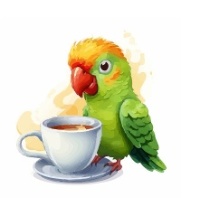解密大厂技术团队如何实战OKR!
解密大厂技术团队如何实战OKR!

0 你的问题,我知道!
OKR规划分两阶段:
- 高层业务负责人 针对 整条业务线 做业务规划
- 中层Team Leader 针对 专业团队 做团队规划
做团队规划,了解第二阶段就够?No,中层TL同样要了解第一阶段。你只有理解业务规划背后逻辑,才能做出匹配的团队规划。
这也是为啥很多公司,当你到P7+,就有机会参与业务规划讨论。
1 阶段一:业务规划
1.1 第一步:聚焦业务目标(O)
聚焦是OKR规划法的第一核心理念,OKR和KPI做法核心区别之一:
- 业务负责人(可能不是一人,而是决策团队)使用OKR规划时,要在众多可选方向,挑出最重要TopN(N≤3)
- 而若用KPI,很多人规划时,就简单把一些指标数值分别加点
这就是OKR规划优势: 聚焦最重要事,争取形成合力和突破。目标太多导致资源投入分散,难以形成突破:10个60分目标不如一个100分目标。
这是OKR规划最难一步。
很多业务目标通晒大会,介绍业务规划的高层负责人,几乎每次都有人被挑战,甚至被批惨。
而业务线内部讨论业务目标时,也经常激烈争执,如争执不下,就只能更高层老板决定,但老板也是凭感觉经验。
为啥会这样,难道世界真的都是草台班子?因为
业务规划难点
- 面对的环境和处理的信息本就很大不确定性。如竞品策略、行业动态和用户心理,都没法数据准确体现,不管谁,都只能靠推断甚至猜测
- 就算条件和信息达成一致,但不同人制定规划时,判断和选择标准也不同。如你知道竞品策略,那现在要跟它贴身短打、正面硬刚 or 避其锋芒、错位竞争?各有道理,谁对谁错,可能只有事后诸葛亮
因为业务规划存在这么大困难,所以别觉得OKR规划法包治百病、一用就见效。毕竟方法本身不能取代经验,你还得在工作摸爬滚打,积累经验,加深业务理解。
但聚焦业务目标过程中的互怼和争执,本身也是澄清和完善过程。即OKR规划法还是比其他方法(如KPI规划法)更有逻辑,更有说服力。
聚焦目标:
- 可定性描述,如“提升用户满意度”
- 也可为可衡量,如“市场占有率排名前三”,通常不强制量化。因为KR有具体数据描述,目标中只要把数据意义提炼出来
若你一定要在目标体现数据也可:
- 在KR中直接拆解目标中的数据,KR数据总和≥目标中的数据,如:
O:新增用户数2000万 KR1:短视频平台买量拉新1000万 KR2:开发新业务拉新600万 KR3:通过与其它平台换量拉新500万
- 在KR中添加辅助指标,如:
O:新增用户数2000万 KR1:新增用户数2000万 KR2:投入资金不超过1亿 KR3:新用户月留存率不低于40%
1.2 第二步:分解关键结果(KR)
聚焦业务目标后,分解 关键结果(KR)。每个目标,业务负责人都要提出3~5个KR。
这些KR:
- 评判目标有无实现的衡量标准
- 也体现为了实现目标,可能要做的具体事情范围
如业务KR说“新增用户数2000万”,那下面团队可能进一步分解出“短视频平台买量xx万”、“开发新业务拉新xx万”。
所以:
- KR太多不行,如列10条,事太多,精力和资源分散,难突破
- KR太少也不行,只列1条,说明没全面考虑到各种实现目标的方法,也导致衡量标准单一,最后可能为追求短期单个数据指标而忽视业务长远发展
如曾经有业务把“新增用户数xx万”作为唯一KR,于是下面中层执行时只管砸钱买量,不管用户质量。
结果到年底,新增用户数达标,但支出>>预算,用户留存率也差;第二年严格控制预算之后,新增用户数立马被打回原形,用户活跃率更远不达标。
所以,业务目标有无实现,需综合3~5个KR一起判断。
KR有两种表现形式:量化 KPI、虽不能量化但可衡量的里程碑。所以KR不能采取定性描述,像“用户量大幅增长”肯定不合格,因为不可衡量。
可量化KR,关键在于具体的数值应该定多少,太低了看起来没有挑战,太高了看起来没有希望,但具体定多少并没有明确的标准。一般可参考历史数据、竞品数据或行业数据,也可举全公司之力定有挑战的目标值。
2 阶段二:团队规划
2.1 第一步:对齐业务OKR
对齐是OKR规划第二核心理念,OKR/KPI做法另一核心区别。
下级TL要对照上级业务OKR,看团队能贡献啥价值和力量,让全公司“心往一处想,劲往一处使”。若现在业务规划OKR:
O:总用户数达到行业第一 KR1:新增用户数2000万 KR2:投入资金不超过1亿 KR3:新用户月留存率不低于40%
那么如果你是技术团队的TL,要怎么对齐呢?
- 先针对KR1,技术团队能做的包括“降低App包大小”、“SEO优化”、“开发某某新业务”和“开发小程序”等
- 再针对KR2,技术团队能做的不多,除非运营明确说“某大渠道ROI偏低,主要原因包太大影响转化”,这时就可直接把解决问题作为团队目标
- 最后,针对KR3,技术团队能做的包括“优化用户体验”“新用户连续签到奖励”和“新用户引导”等
可见,光对照业务规划的一个OKR,就能想到很多关联事情。按同样思路,再对照其他OKR继续分析,把想到的事分类整合排序形成自己团队OKR,对齐业务OKR工作就完成。
对齐过程也需“聚焦”,你的判断和选择得有逻辑,不能把所有关联事情全部罗列出来去做。
如KR3“新用户月留存率不低于40%”,你想到可通过“优化用户体验”技术手段提升新用户留存率。但“用户体验”是影响新用户留存的关键因素?就需论证。你不能简单摆出“提升用户体验肯定可提升用户留存”的正确废话,而是通过数据分析或用户调研结果证明逻辑关系。
2.2 第二步:补充专业OKR
对齐业务OKR之后,团队规划第二步是 补充 专业OKR:
- 若对齐业务OKR是自上而下传导
- 补充专业OKR就是自下而上提炼
TL要结合业务目标和团队情况,提出专业OKR,和业务OKR共组团队完整OKR。
如技术团队现在业务系统问题较多,团队成员要长期处理各种线上问题。虽因团队成员能力强,最终这些问题没对业务直接产生啥影响,但站在整个团队角度,这降低团队成员工作效率和质量,长期这样影响正常版本开发进度。对此,TL可能提炼专业目标:季度线上问题平均数量从XX减少到YY。
这样的目标很难通过对齐得到,只能由技术团队自己提出。
- 自上而下的传导需要很强业务理解能力
- 而自下而上提炼需很强的专业能力
两种能力相辅相成,用OKR做团队规划的时候缺一不可。所以,OKR规划对TL也是考验。
3 实战技术团队OKR产生
某技术团队负责租车交易软件:
- 业务负责人确定2021上半年业务目标,其中之一是用户量增长(具体是增长到行业第二)
- 业务负责人分解KR,如针对用户量增长这个目标,业务负责人分解出3个KR:
graph TD
O[O: 用户量增长到行业第二]
KR1[KR1: 用户量增长4000万]
KR2[KR2: 买量支出不超过10亿]
KR3[KR3: 推出新业务A]
O --> KR1
O --> KR2
O --> KR3- 技术团队TL拿到业务规划的OKR后,进行对齐
KR1是“用户量增长4000万”,乍看和技术团队无关,但这就是技术团队需基于业务思考技术的典型KR。
TL于是,就从
3.1 技术角度分析业务目标
- 哪些技术指标和用户增长量有关?
- 和啥技术有关?
- 团队现在具备这些技术?
- 还有优化空间?
如影响用户增长量的一些技术指标,包括“安装包大小”、“App 启动时间”、“App崩溃率”和“App耗电情况”。
经分析,TL认为目前安装包太大,且App启动时间较长,于是
3.2 提出对应KR
① App安装包从20M缩减到8M
② App启动时间从2s优化到500ms
KR2是“买量支出不超过10亿”,一般和技术团队关系不大,不关注。
但TL了解到,现在运营的系统无法评估每个渠道买量效果,所以增加对应KR:
③ 新增渠道质量监测功能
这也反映出,技术团队TL如了解更多业务信息,可为业务做更大贡献。
KR3是“推出新业务A”,TL把它直接变成团队KR:
④ 推出新业务A
TL再继续对齐业务规划的其他OKR,又得俩KR:
⑤ 改版B业务
⑥ 后端服务器接口平均响应时间从60ms提升到30ms
然后,对KR分类整合排序
3.3 归纳出目标
- O1:优化技术指标,提升用户体验
- O2:保证关键业务和功能上线
所以,TL通过对齐业务OKR得到的结果:
O1:
graph TD
O1[O1: 优化技术指标,提升用户体验]
KR1[KR1: App安装包从20M缩减到8M]
KR2[KR2: App启动时间从2s优化到500ms]
KR6[KR6: 后端服务器接口平均响应时间从60ms提升到30ms]
O1 --> KR1
O1 --> KR2
O1 --> KR6O2:
graph TD
O2[O2: 保证关键业务和功能上线]
KR3[KR3: 新增渠道质量监测功能]
KR4[KR4: 推出新业务A]
KR5[KR5: 改版B业务]
O2 --> KR3
O2 --> KR4
O2 --> KR53.4 补充专业OKR
技术团队TL结合业务目标和团队情况,补充专业OKR。
当前阶段在技术上有无重点要做的事?TL思考发现,要实现用户增长,要做很多新的尝试性功能,但团队目前版本节奏较慢,因为版本多且测试环境不足。
为解决测试环境不足导致版本等待等问题,他得出目标:
- O3:提升测试效率
为此,他也分解出几个KR:
- ① 添加4台测试环境机器
- ② 引入Docker,支持一台机器搭建20套环境
- ③ 一键生成全套测试环境
于是,补个专业OKR:
graph TD
A[O3: 提升测试效率] --> B[KR1: 添加4台测试环境机器]
A --> C[KR2: 引入Docker, 支持一台机器搭建20套环境]
A --> D[KR3: 一键生成全套测试环境]TL将业务上的OKR和专业上的OKR结合起来,就得到了团队完整的OKR,团队规划也就做好了。
看完这个例子,我想你已经对OKR规划法的使用建立了整体的认知。不过你对OKR可能还有一些疑问,接下来,我就针对两个常见的问题进行解答。
4 总结
OKR规划:
- 第一阶段:P9/P10高层的业务负责人针对整条业务线做业务规划,先聚焦业务目标(O),再分解关键成果(KR)
- 第二阶段:P7/P8中层TL针对专业团队做团队规划,先对齐业务OKR,再补充专业OKR
- 聚焦是OKR第一核心,对齐是OKR第二核心,这也是OKR/KPI核心区别
FAQ
Q:OKR咋做绩效考核?硅谷很多科技公司OKR取得很好效果,但介绍OKR的文章往往说和绩效考核无关。如Facebook绩效考核方式是 360度环评,即通过多人打分来对员工绩效考核。目前,中国公司推广这种考核方式可能性不大。若推行 OKR,绩效考核咋做呢?
A:KR两种形式,KPI和里程碑,都要求 可衡量。所以,根据OKR本身做绩效考核没啥问题,可像考核KPI一样考核KR。
- 若是KPI形式KR,就看数值是否达标,跟原定目标差多少
- 里程碑形式KR,就看事情是否在规定时间节点高质量完成
为方便考核,甚至可在制定 KR 时,就 直接将结果的等级包含进去,如:
KR1:用户量增长1000万(合格);用户量增长2000万(良好);用户量增长3000万(优秀)
但OKR绩效考核时,可能问题:
① KR都做到,但目标没实现。
如假设xx专车业务目标是“超越dd”,KR是订单数增长200%,但到年底盘点,订单数增长300%,超额完成,但行业第一还是dd。
OKR关键是实现目标,从这角度,团队人员绩效不会高。
② KR没做到,但目标实现。
如某租车软件业务目标是“成为行业第二”,年底盘点发现KR没达成,但确实成为行业第二。
这得继续分情况讨论,看目标到底咋实现的:
- 若因竞争对手都不给力,全靠同行衬托,团队绩效也不会高
- 若因一开始KR确实定太高,团队为实现目标,没有把有限资源浪费在盲目地追求数据指标,那这值得肯定
而若因外部不可抗力如疫情或国际政策变化,团队及时放弃年初制定KR,探索出新路径来实现目标,这更值得激励。
Q:OKR能做个人规划?
A:虽然宣传OKR文章一般声明OKR同样适合个人规划,但实践效果,如P7/P8/P9且带团队TL,个人规划就是团队规划,使用OKR做个人规划就是团队规划。
对P5/P6/P7没带团队的,使用OKR做个人规划别扭,这级别技术更多执行团队主管安排的任务,自己能掌控规划内容不多。
本文已收录在Github,关注我,紧跟本系列专栏文章,咱们下篇再续!
作者简介:魔都架构师,多家大厂后端一线研发经验,在分布式系统设计、数据平台架构和AI应用开发等领域都有丰富实践经验。 各大技术社区头部专家博主。具有丰富的引领团队经验,深厚业务架构和解决方案的积累。 负责:
- 中央/分销预订系统性能优化
- 活动&券等营销中台建设
- 交易平台及数据中台等架构和开发设计
- 车联网核心平台-物联网连接平台、大数据平台架构设计及优化
- LLM Agent应用开发
- 区块链应用开发
- 大数据开发挖掘经验
- 推荐系统项目 目前主攻市级软件项目设计、构建服务全社会的应用系统。
参考:
- 0 你的问题,我知道!
- 1 阶段一:业务规划
- 1.1 第一步:聚焦业务目标(O)
- 业务规划难点
- 1.2 第二步:分解关键结果(KR)
- 1.1 第一步:聚焦业务目标(O)
- 2 阶段二:团队规划
- 2.1 第一步:对齐业务OKR
- 2.2 第二步:补充专业OKR
- 3 实战技术团队OKR产生
- 3.1 技术角度分析业务目标
- 3.2 提出对应KR
- ① App安装包从20M缩减到8M
- ② App启动时间从2s优化到500ms
- ③ 新增渠道质量监测功能
- ④ 推出新业务A
- ⑤ 改版B业务
- ⑥ 后端服务器接口平均响应时间从60ms提升到30ms
- 3.3 归纳出目标
- 3.4 补充专业OKR
- 4 总结
- FAQ

腾讯云开发者

扫码关注腾讯云开发者
领取腾讯云代金券
Copyright © 2013 - 2025 Tencent Cloud. All Rights Reserved. 腾讯云 版权所有
深圳市腾讯计算机系统有限公司 ICP备案/许可证号:粤B2-20090059 深公网安备号 44030502008569
腾讯云计算(北京)有限责任公司 京ICP证150476号 | 京ICP备11018762号 | 京公网安备号11010802020287
Copyright © 2013 - 2025 Tencent Cloud.
All Rights Reserved. 腾讯云 版权所有





![PotPlayer安装与配置[通俗易懂]](https://ask.qcloudimg.com/http-save/yehe-8223537/01d5b353a40f8934d6ecbb642c52dfc1.png)






![电脑键盘快捷键和组合键功能使用大全[通俗易懂]](https://ask.qcloudimg.com/http-save/yehe-8223537/67fc38add39e185647bb6f9940781bcf.jpeg)

![vscode设置删除行快捷键[通俗易懂]](https://ask.qcloudimg.com/http-save/yehe-8223537/321ec10150b71812f56405bfff9bd3dd.png)


![将 VSCode 快捷键修改为 eclipse的快捷键[通俗易懂]](https://ask.qcloudimg.com/http-save/yehe-8223537/685b6a81adcc435ac070118e8d97e527.png)
